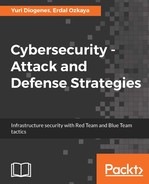Let's use the WannaCry outbreak as a real-world example, using the fictitious company Diogenes & Ozkaya Inc. to demonstrate the end-to-end incident response process.
On May 12, 2017, some users called the help desk saying that they were receiving the following screen:

After an initial assessment and confirmation of the issue (detection phase), the security team was engaged and an incident was created. Since many systems were experiencing the same issue, they raised the severity of this incident to high. They used their threat intelligence to rapidly identify that this was a ransomware outbreak, and to prevent other systems from getting infected, they had to apply the MS17-00(3) patch.
At this point, the incident response team was working on three different fronts: one to try to break the ransomware encryption, another to try to identify other systems that were vulnerable to this type of attack, and another one working to communicate the issue to the press.
They consulted their vulnerability management system and identified many other systems that were missing this update. They started the change management process and raised the priority of this change to critical. The management system team deployed this patch to the remaining systems.
The incident response team worked with their antimalware vendor to break the encryption and gain access to the data again. At this point, all other systems were patched and running without any problems. This concluded the containment eradication and recovery phase.
